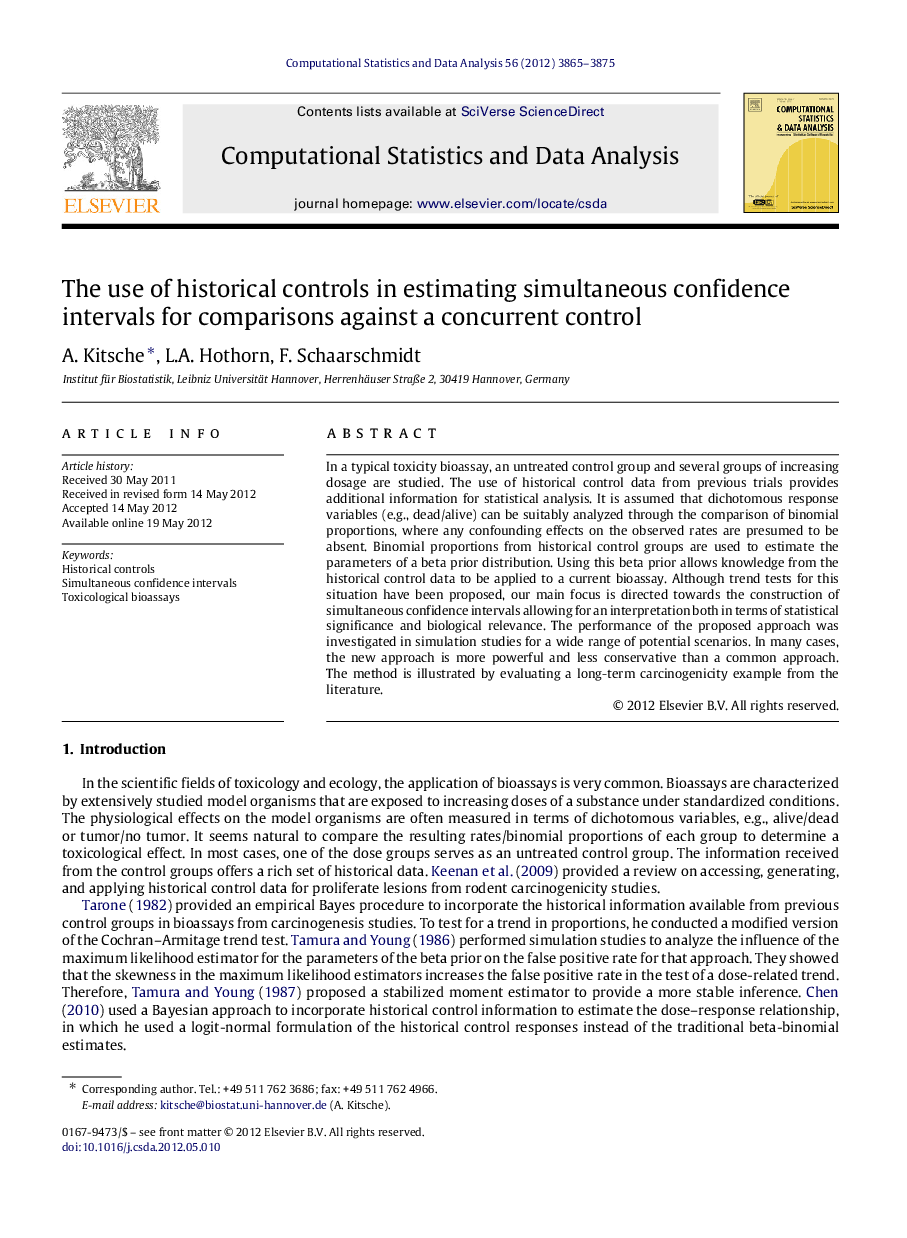| Article ID | Journal | Published Year | Pages | File Type |
|---|---|---|---|---|
| 415805 | Computational Statistics & Data Analysis | 2012 | 11 Pages |
In a typical toxicity bioassay, an untreated control group and several groups of increasing dosage are studied. The use of historical control data from previous trials provides additional information for statistical analysis. It is assumed that dichotomous response variables (e.g., dead/alive) can be suitably analyzed through the comparison of binomial proportions, where any confounding effects on the observed rates are presumed to be absent. Binomial proportions from historical control groups are used to estimate the parameters of a beta prior distribution. Using this beta prior allows knowledge from the historical control data to be applied to a current bioassay. Although trend tests for this situation have been proposed, our main focus is directed towards the construction of simultaneous confidence intervals allowing for an interpretation both in terms of statistical significance and biological relevance. The performance of the proposed approach was investigated in simulation studies for a wide range of potential scenarios. In many cases, the new approach is more powerful and less conservative than a common approach. The method is illustrated by evaluating a long-term carcinogenicity example from the literature.
